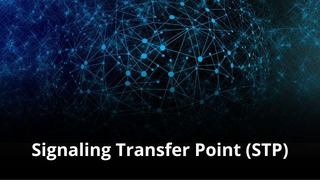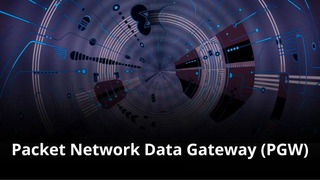Introduction about the Service Communication Proxy (SCP)
The Service Communication Proxy (SCP) is a critical and foundational routing component within the architecture of 5G core networks and the associated Service-Based Architecture (SBA). Understanding its purpose is essential for comprehending how modern mobile systems efficiently manage the HTTP/2 communication between all core network functions (NFs). This proxy acts as the central API gateway and router for all control plane signaling, ensuring that crucial information for mobility, session management, policy, and subscriber data is rapidly and reliably routed between microservices. You will find it crucial for any operator aiming to leverage the scalability, agility, and modularity of the 5G core.
What are the details of an Service Communication Proxy (SCP)?
- History and Evolution of the Service Communication Proxy
- Core Utility and Functionality of the SCP
- Technical Integration and Data Model
- SCP Ownership for MVNOs and IoT Companies
- Organizational Impact of SCP Ownership?
- Redundancy and High Availability
- Impact of 6G on the SCP
- Frequently Asked Questions about the SCP
- Summary
History and Evolution of the Service Communication Proxy (SCP)
The concept of a dedicated control plane router evolved from the SS7-based STP and the Diameter-based DRA with the radical shift to the 5G Service-Based Architecture (SBA). This new architecture abandoned monolithic nodes in favor of modular, cloud-native Network Functions (NFs) that communicate via standard web protocols. The SCP was introduced to manage this new form of signaling, acting as the centralized service mesh controller. Its design focused predominantly on the essential task of Service Discovery—allowing NFs to find and communicate with each other without knowing their specific IP addresses. This reflected the main requirement for deploying a highly scalable, flexible, and microservices-based core network. Its architecture is fundamentally different from its predecessors, moving from a proprietary telecom protocol approach (SS7/Diameter) to a standard HTTP/2 API gateway model.
Functional Entities
Central Message Router for circuit-switched voice and data control (MAP).
Central Proxy Agent/Router for packet-switched data control.
Central Hub for Network Function discovery, load bal. & routing of cloud-native microservices communication.
Core Utility and Functionality of the SCP
What is the SCP Used For?
The Service Communication Proxy (SCP) is the definitive routing hub for all control plane communication within a 5G core network. Its primary purpose is to act as an API gateway and load balancer for the entire control plane. It manages the routing of all signaling data exchanged between core elements like the AMF, SMF, UDM, PCF, and AUSF, which communicate via RESTful APIs over HTTP/2. It is crucial for ensuring that requests for session setup, policy updates, and authentication information reach the intended Network Function instance swiftly and accurately, particularly in cloud-native environments where NFs are constantly scaling in and out. Deploying an SCP is necessary to enable the core benefits of the SBA: modularity, rapid deployment, and horizontal scalability.
Key Functions of the Service Communication Proxy (SCP)
Lets investigate the core functions of the Service Communication Proxy (SCP) to understand its critical role in modern network operations:
- Request Aggregation/Splitting: It can manage complex requests by splitting them and aggregating the responses before returning a single answer to the requesting NF.
- Service Discovery: It provides the mechanism for NFs (acting as consumers) to discover the addresses of other NFs (acting as producers) using the Network Repository Function (NRF).
- Load Balancing: It distributes signaling traffic evenly across multiple instances of the same NF (e.g., multiple UDM instances) to prevent overloads and optimize resource usage.
- Topology Hiding: The SCP hides the specific internal addresses of NFs from other domains or roaming partners, centralizing the control plane’s security perimeter.
- API Gateway: It acts as the centralized point for security enforcement, performing API access control, validation, and throttling.
- NF Selection: It selects the appropriate NF instance based on complex rules, such as the subscriber’s location or the type of service required.
- Interworking Function (IWF): Advanced SCPs can facilitate protocol interworking between the native HTTP/2 SBA and legacy Diameter or SS7 domains.
- Central Logging & Monitoring: It provides a central point for logging and tracing all control plane transactions, essential for troubleshooting and operational visibility.
- Message Routing: It routes HTTP/2 requests between different Network Functions (NFs) based on the target NF type and the subscriber’s identity SUPI.
Technical Integration and Data Model
Integration with Other Systems
The Service Communication Proxy (SCP) does not operate in isolation; it is the core Service Mesh controller in the 5G SBA. Examine its key integration points to appreciate its centrality. It connects to all Network Functions (NFs) within the core: the AMF, SMF, UDM, PCF, and AUSF. Its routing intelligence is heavily dependent on the Network Repository Function (NRF), which acts as the service registry, providing the location of all currently active NF instances. The SCP also typically acts as the gateway for external signaling, routing requests to and from roaming partners.

Technical Data Model and Key Interfaces
The Service Communication Proxy (SCP) employs a structured Service Routing Data Model. This model is defined by the 3GPP standards and dictates how API calls are mapped to target NFs. Key interfaces utilized by the SCP are fundamentally based on standard IT protocols:
- NF Service Interfaces: The SCP communicates with all Network Functions using HTTP/2 and RESTful API requests/responses. The content of these messages uses standard IT data formats like JSON.
- Service Routing Tables: These internal tables store the logic necessary to map an incoming service request (e.g., “request subscriber policy”) to the specific running instance of the NF that can handle that request (e.g., a specific PCF instance).
- NRF (Service Registry): The SCP constantly queries the NRF to get the most up-to-date list of available NF instances and their health status, allowing for intelligent and dynamic load balancing.
SCP Ownership for MVNOs and IoT Companies
Why Own a SCP?
For a Full MVNO or an IoT company building a 5G core, owning a dedicated Service Communication Proxy (SCP) is essential to fully realize the benefits of the 5G SBA. Consider that this node is the fundamental system that governs all control plane interactions. Owning it allows these companies to gain complete architectural freedom to deploy, scale, and upgrade their individual Network Functions (UDM, PCF, etc.) independently. Furthermore, the SCP provides a centralized choke point for enforcing security and service access rules between NFs, which is crucial for delivering specialized IoT services and implementing granular security policies.
Advantages and Disadvantages of SCP Ownership
Enables True 5G SBA: Allows for cloud-native deployment and independent scaling of all NFs.
Simplified Interconnect: Centralizes the routing and security perimeter for all external signaling.
Full Agility & Speed: Dramatically reduces the time needed to introduce or upgrade services/NFs.
Superior Load Balancing: Intelligently balances requests across NF clusters based on real-time load and health.
Enhanced Observability: Central point for end-to-end tracing and logging of all control plane traffic.
High Initial Investment in advanced software and expertise in cloud-native platforms.
Operational Complexity requiring expertise in HTTP/2, APIs, and service mesh concepts.
Maintenance and Upgrade Costs for a highly dynamic, software-defined system.
Requires tight integration with the NRF and the core cloud platform (Kubernetes, etc.).
Requires a paradigm shift in operational philosophy compared to legacy cores.
Organizational Impact of SCP Ownership
Analyzing the impact of integrating an SCP (Service Communication Proxy):
Operational Impact: Requires DevOps teams proficient in cloud-native orchestration (e.g., Kubernetes) and HTTP/2 based RESTful signaling. Operations shift from managing physical links to managing and updating microservices and dynamic service routing logic. Teams must monitor application-level health and latency, and manage rapid, automated scaling (auto-scaling) of the SCP based on signaling load.
Technical Impact: The SCP is the central logical hub of the 5G Service-Based Architecture (SBA). It must securely handle massive volumes of HTTP/2 traffic and perform functions like NF (Network Function) discovery on behalf of consuming functions, load balancing, and overload control. It requires deployment as a highly available, cloud-native application, often integrated with the Network Repository Function (NRF) for topology awareness.
Financial Impact: Involves Operating Expenditure (OpEx) dominating CapEx due to a cloud-native software licensing and consumption model. The primary financial justification is accelerated service deployment and operational efficiency; the SCP simplifies the network topology (reducing a “mesh” to a “star”), which drastically cuts down on the integration and testing effort required when introducing new 5G NFs from different vendors.
Security Impact: The SCP sits in the middle of all 5G control plane communication. While the traffic is encrypted (TLS/HTTPS), the SCP requires security features like Layer 7 message filtering and rate limiting to protect the core network NFs (like AMF and SMF) from internal or external signaling overloads and malicious API requests.
Redundancy and High Availability

The Service Communication Proxy (SCP) is the traffic cop of the 5G control plane; therefore, Redundancy and High Availability (HA) are absolutely critical requirements. Implement a fully redundant system architecture, which is inherently achieved by deploying the SCP as a set of highly available, stateless microservices within a cloud environment (like Kubernetes). This design ensures that if one SCP instance fails, the traffic is instantly redirected to another instance by the underlying cloud infrastructure. The system must also employ rigorous load monitoring and auto-scaling mechanisms. These mechanisms guarantee that the SCP capacity automatically scales up during periods of high signaling load, ensuring the control plane remains stable and responsive even during massive events.
Impact of 6G on the SCP
SCP’s Role in 5G and Beyond
The Service Communication Proxy (SCP) is a native and necessary component of the 5G core’s Service-Based Architecture. It is the architectural element that fundamentally enables the modularity and scalability of the 5G system.
6G Architecture
In the 6G core, the underlying principles of the SBA—decoupling functions, using standard IT protocols (HTTP/APIs), and relying on cloud-native deployments—are expected to be deeply entrenched and expanded. The SCP’s functionality will likely evolve into a more advanced and distributed Service Mesh that integrates capabilities like AI-driven routing optimization, enhanced security filtering, and specialized routing for distributed edge computing functions. However, the fundamental role of centrally routing, balancing, and securing control plane service requests—the core function of the SCP—will remain the essential design principle for the 6G control plane.
Frequently Asked Questions about the Diameter Routing Agent (DRA)
1. What is the main function of the SCP?
The primary function is to act as an API Gateway to route, load balance, and secure HTTP/2 requests between Network Functions (NFs) in the 5G core.
2. How does the SCP know where to route a request?
It performs Service Discovery by querying the Network Repository Function (NRF), which acts as the service registry, to find the available instances of the target NF.
3. What is the relationship between the SCP and the DRA?
The SCP is the HTTP/2 equivalent of the DRA, which routes Diameter signaling. They perform the same logical control plane routing role in different architectural contexts.
4. What protocols does the SCP route?
The SCP primarily routes messages that use HTTP/2 and RESTful APIs with data encoded in JSON.
5. What is the SBA?
The Service-Based Architecture (SBA) is the key architectural design of the 5G core, where NFs are microservices that communicate with each other using defined APIs, facilitated by the SCP.
Summary
The Service Communication Proxy (SCP) is the central, authoritative routing hub that controls all API-based signaling traffic in the 5G core’s Service-Based Architecture. For a Full MVNO, acquiring and operating an SCP is essential because it enables the decoupling and independent scaling of all 5G network functions (NFs), delivering the full potential of cloud-native agility. This grants the MVNO full control over service orchestration, security perimeter, and load balancing for the control plane. This decision involves substantial capital expenditure on cloud infrastructure and requires specialized API and cloud-native networking expertise. The SCP’s role is not just routing; it is the design principle that underpins the stability and scalability of the entire 5G control plane.

























